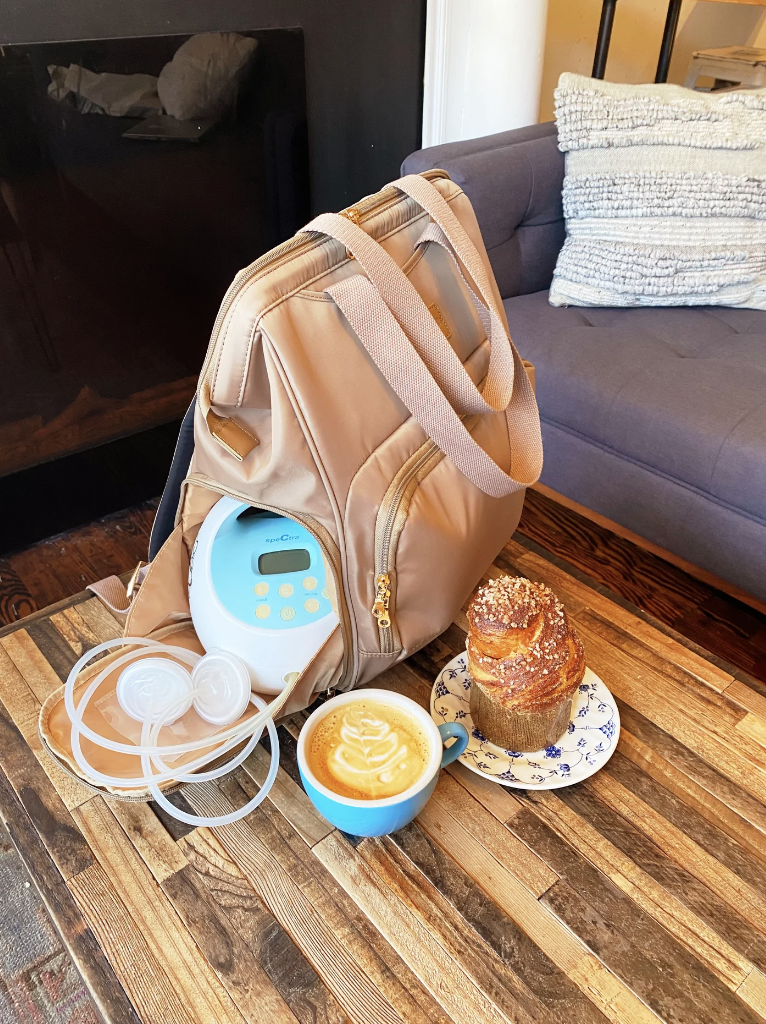Pumping breast milk can solve a lot of problems for moms. If you’re going to be returning to work, pumping allows you to build up a supply of breast milk for your baby. If your breast milk supply has kicked into overdrive, pumping can give you some much needed relief. Pumping can also relieve engorgement, improve outcomes for moms with inverted or flat nipples, and save around $116 per month compared to formula feeding.
However, pumping can also be daunting, especially if you’re a new mom figuring out all the other ropes of “mom-ing.” While breastfeeding and pumping both become old hat after a few months, it can be tricky during the early days to know if you’re pumping correctly. If you’re not, it can create frustration and pain rather than improving conditions.
Signs that your pumping process needs some work
It’s likely that you’ll never get the same warm fuzzies pumping breast milk as you do breastfeeding, but pumping shouldn’t be painful. If you’re experiencing the following, it may be that there’s a kink in your pumping practice:
- Pumping is painful
- Pumping is not producing breast milk
- Pumping is interfering with breastfeeding
- Pumping is causing stress
Pumping breast milk shouldn’t be painful.
Pumping may be uncomfortable at first, but it shouldn’t be painful. A few factors can cause pumping to be more painful. Dry skin and breast engorgement can lead to more than usual discomfort, and both are easily resolved by applying a moisturizer to skin and massaging breasts to loosen the collagen fibers. Flanges that don’t fit properly can also lead to pain. Similarly, setting your breast pump to a suction that is too intense for your comfort level will cause unnecessary pain.
Takeaways:
- The right way to pump is the way that feels best to you. Listening to your body is key here.
- Take time to keep yourself hydrated and moisturized.
- Find a flange that fits and a setting that feels comfortable.
Pumping should boost breast milk supply, not reduce it.
A breast pump can be a mom’s best friend when it comes to increasing milk production. If your pumping sessions are not producing, something has probably gone wrong. A mis-sized flange or mis-calibrated suction setting can play a role here, too. If your pump flange is too small or too large, it can pinch milk ducts, leading to lower milk production. Likewise, pumping at a setting that’s too intense can actually reduce milk production. In addition, if you’re not completely emptying your breasts in a pumping session, your body is not getting the signal to produce more milk.
Takeaways:
- Finding the right fit and the right settings will boost your breast milk supply.
- Suffering through uncomfortable pump settings will most certainly interfere with breast milk production.
- Empty both breasts completely while pumping to let your body know it’s time to make more milk.
Pumping should supplement breastfeeding, not disrupt it.
Pumping is a great way to supplement breastfeeding if you’re returning to work or just want to have the freedom to get out of the house more. However, if pumping is causing pain, it can disrupt breastfeeding. Likewise, if your breasts are not emptied out during pumping sessions, your breastfeeding sessions may be less productive. Another common cause of breastfeeding interruption is an inconsistent pumping schedule – or no pumping schedule. Babies nurse in regular cyclical patterns, usually every three to four hours. Your body anticipates that kind of regularity, so sporadic pumping can confuse your body and interfere with your baby’s breastfeeding schedule.
Takeaways:
- Pain and decreased milk supply caused by ineffective pumping conditions can both contribute to breastfeeding interference.
- Use your baby’s nursing schedule as a jumping off point for a regular, consistent pumping schedule to gain the advantages of both.
- Continuing to pump at work will keep your body on its regular breastfeeding schedule, which will make it easier to maintain breastfeeding sessions.
Pumping should decrease stress, not create it.
Breast pumps were designed to make mom’s life easier, not harder. A breast pump should free you up for more “me time” not cause hardship and stress. Getting a pump and flange that feels comfortable, finding your maximum comfortable suction, and establishing a daily schedule should minimize stress and increase your breast milk supply stash. You can even use pumping sessions as a mini-meditation to improve stress levels in other areas of your life.
Takeaways:
- Finding your pumping groove will decrease the stress you may feel when you first get started.
- Try turning pumping sessions into meditation sessions for maximum de-stressing.
If you’re pumping correctly, it should be painless, productive, and stress-free.
If you’re experiencing pumping problems, it may be that your pump or your practice need a few tweaks. At Milk N Mamas baby, our team of moms have experienced the challenges and joys of balancing breastfeeding, pumping, and all the other responsibilities that fall to moms. Our knowledge of breast pumps, pumping essentials, and breast pumping accessories makes us a reliable resource if you need some guidance in your pumping practice. Don’t hesitate to reach out!
